All you need to know about cephalic position/head down position
Medically Reviewed by: Dr. Veena Shinde (M.D, D.G.O, PG – Assisted Reproductive Technology (ART) from Warick, UK) Mumbai, India
-
Author: Khushboo Kirale
- >> Post Created: March 28, 2022
- >> Last Updated: April 26, 2024
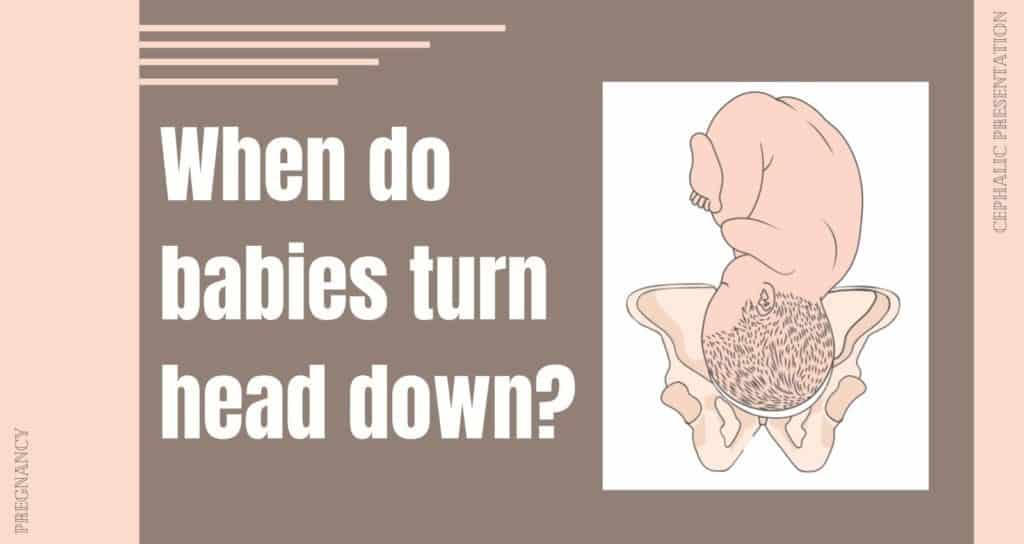
When do babies turn head down - Table of Contents
The beginning of life in a womb is such a wonderful mystery if you really ponder over it. And even more astounding is how an unborn baby moves around in the womb until it naturally settles into the best possible position to arrive in this world.
But when exactly does this transition or movement happen? Most mothers have this one question on their mind – ‘When do babies turn head down?’
Our article will help all you pondering women and help you answer this burning question. That’s not all, we will also help you further understand what is cephalic presentation /head down position/ head down presentation.
First let’s understand cephalic meaning… and then understand when does the baby turn head down?
Cephalic meaning: Understanding the head down position/cephalic position
Cephalic meaning as per the oxford dictionary is simply ‘relating to or in the head.’
Medical definition of cephalic – Cephalic: Head end of the body or relating to the head. Situated in, on or near the head. Cephalic is same as cranial, i.e. relating to the head or cranium.
The word “cephalic” comes from the French word “cephalique,” which comes from Latin “cephalicus,” which comes from the Greek word “kephalikos,” which means the head.
What is Cephalic Presentation?
When your doctor says head down position/ cephalic position/ cephalic presentation of your baby, he is talking about your baby’s head being the first part to enter your pelvis.
In head down position or cephalic position, the presentation (the first part to exit from birth canal) is the baby’s head. Here, the baby’s head is positioned near the opening of the birth canal, with its feet up, near the mother’s ribs.
In terms of safety, ease of delivery, and the health of the baby and mother, this is the best position a baby can be in just before labor begins.
The fetal position gains a lot of importance once you enter your final trimester; your doctor will monitor it regularly. The baby’s position in the third trimester plays a major role in deciding how easy or difficult the labor and delivery process will be.
If the baby is not in the cephalic position, then the doctor may try certain methods to persuade the baby into the optimal position.
When do babies turn head down?
A baby starts moving around from the 14th week of pregnancy and these initial movements are called ‘fluttering’ or ‘quickening.’
After the 36th week of pregnancy or the third trimester, most babies settle in the head down position called the cephalic position, readying themselves for birth. This is the best fetal position as it makes the labor and delivery much easier and safe as compared to other positions.
An unborn baby keeps moving around in the womb till pregnancy enters the third trimester. When the fetus starts moving in the cephalic position after that, it is known as ‘head engagement.’ This begins between the 32nd and 36th week.
As head engagement begins, the fetus starts moving toward the mother’s pelvic region. Due to this, the mother can feel more of the baby in her pelvic region and less in the abdomen.
So basically, to answer ‘When do babies turn down?’ – the answer is babies turn their head down between 32 and 36 weeks.
Read this next
Types of head down position/ cephalic position
You need to be aware that there are different types of head down position/ cephalic position.
Now while the head down position of the baby is simple to understand, but this too has two main variations –
- Cephalic Occiput Anterior
The cephalic occiput anterior or also commonly referred to as occiput anterior position is when the baby is head down and facing the mother’s back.
Majority of the babies in cephalic position – 95% of them – settle in the occiput anterior just before labor. In this position, babies are able to slide out of the birth canal in the easiest way, and hence, a vaginal delivery is definitely the best option.
Occiput anterior has 2 further positions – the Left Occiput Anterior and the Right occiput anterior. This is based on where the baby faces while in the cephalic occiput anterior position.
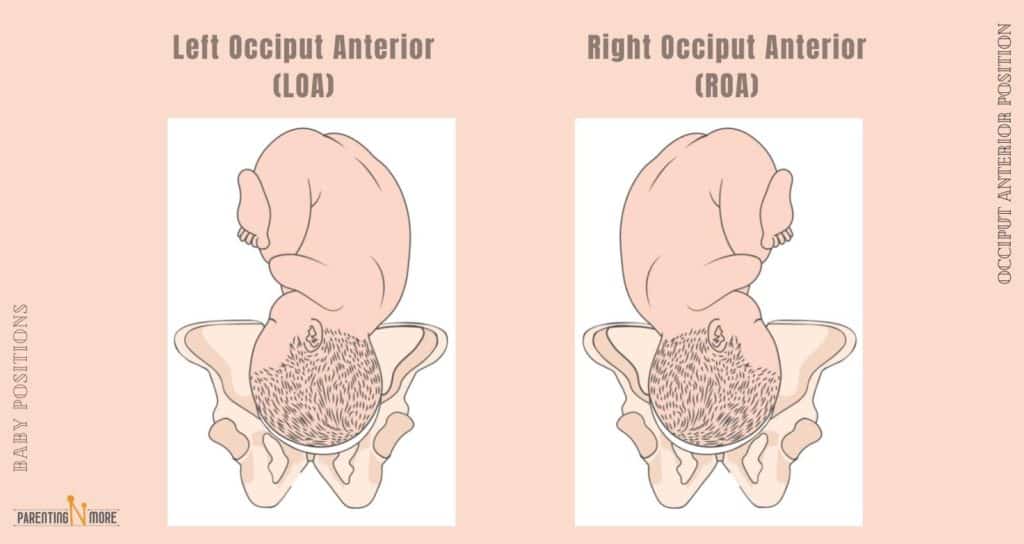
- Cephalic Occiput Posterior
The cephalic occiput posterior, or more commonly referred to as occiput posterior position, is when the baby is head-down, but facing the mother’s belly, with its back against the mother’s back; this makes labor more painful and longer for the mother.
The cephalic occiput posterior position isn’t the best position for delivery, as the baby’s head could get stuck in the birth canal due to its wide position. Sometimes, during a vaginal delivery, your doctor may have to use vacuum and forceps to get the baby out or just go for a C-section.
Only 5% of babies in cephalic position settle as occiput posterior, and on delivery, enter this world with their face up, therefore, are called ‘sunny side up’ babies.
Similar to Occiput Anterior, Occiput posterior position is also divided into Right Occiput Posterior and Left Occiput posterior.
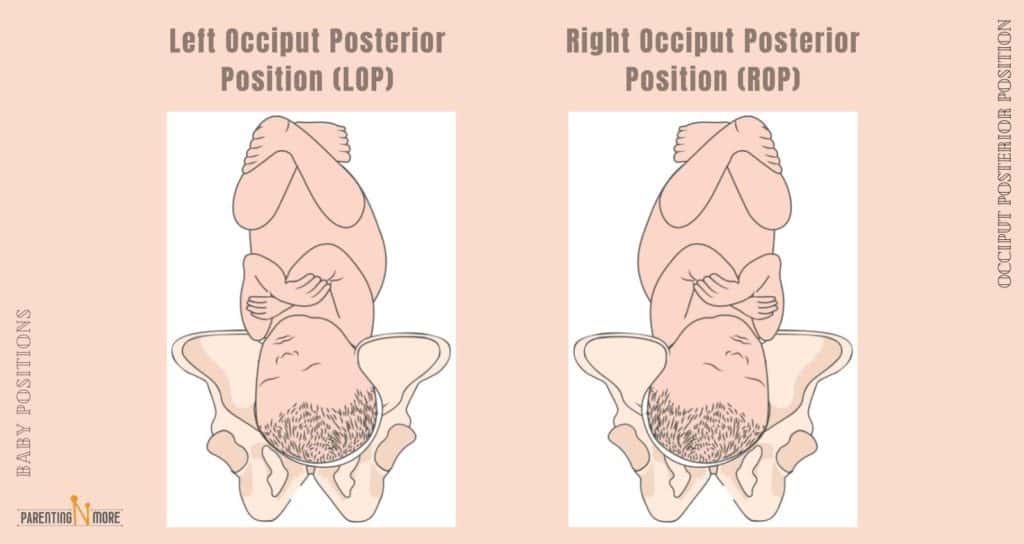
How to know if the baby is in head down position/ Cephalic position?
An ultrasound scan is definitely a foolproof way to confirm a baby’s position. However, there are other ways too in which a mother can determine the baby’s position by feeling the baby’s movements or touching the pregnant belly also referred to as belly mapping.
If your baby is in the head down position/ cephalic position, then –
- You might feel larger movements, like kicks in the upper abdomen. In breech position, the kicks will be felt in the lower abdomen
- You can feel smaller movements of hands and elbows in the lower abdomen
- You can also feel the baby’s head lower in the belly
- You can feel their bottom or legs above the belly button
In cases where the placenta is attached in front of the uterus, known as anterior placenta, feeling the baby’s movements might not be as easy, as the placenta acts like a cushion between the baby and the belly.
If your baby is in the occiput anterior position, since your baby will be facing your spine and his back adjacent to the belly in the front, hence your belly will be properly rounded, with the possibility of your belly button too popping out.
On the other hand, in the occiput posterior position, the baby’s back is against the mother’s back hence the belly may not look as rounded.
How to turn a baby into Cephalic position? How to turn a baby head down?
A baby in any other position besides head down/ cephalic can be a cause of concern and make vaginal delivery difficult or even impossible. These are generally the breech positions or transverse positions.
However, there are a few ways to try to turn the baby in the cephalic position.
There are a few exercises and other simple actions you can perform on your own to encourage the baby to turn before labor. Swimming, pelvic tilts, or spending more time staying upside down can help.
Some recommend using music and temperature to coax the baby to take up the optimal position, though there is no scientific evidence to prove that it works.
Your doctor also can try External Cephalic Version (ECV), wherein they gently, but firmly, puts pressure on certain areas of your belly to nudge the baby into the head down position/ cephalic position. This technique has a success rate of about 50-60% and this can make a vaginal delivery possible.
However, ECV also carries some risks and it is compulsory to have a C-section arrangement in place while performing this, in case an emergency arises. The baby’s heart rate is constantly monitored during the procedure and any irregularity is a cause for alarm and the procedure needs to be stopped and a C-section should be performed instead.
Key Takeaway
Most babies settle in the head down position/ cephalic position on their own before labor. Sometimes babies turn into cephalic position during labor (due to contractions) as well, depending on the position they were in before labor. This is more likely when your baby is in oblique position rather than in any other malposition.
A head down position/ cephalic position makes a vaginal delivery safe and easy, and hence, is the optimal birthing position. Any other position makes the possibility of a vaginal delivery weaker.
Hope our article has answered the question you have been pondering about on ‘When do babies turn head down?’ or ‘When does baby turn head down?’ as some may ask.
Further hope this article has addressed ‘Cephalic meaning’ as well as all what you need to understand about Cephalic position/ head down position, and what is cephalic presentation.
As mentioned in the article the transition of baby into a head down position is quite natural. Lead a healthy lifestyle and keep active and generally everything pans out well.
As a mother, be aware of the developments of your baby’s position and overall health, do not miss your appointments with the doctor and never hesitate to learn or ask questions. After all, it is a journey of a lifetime!
Happy Pregnancy!
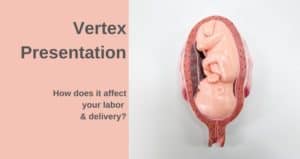




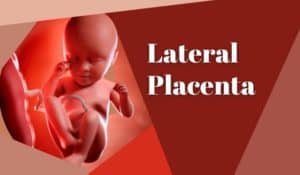




Wohh just what I was searching for, regards for putting up.
Thanks Violet
Your blog has excellent information. Thanks!…
Thanks Finley.
I am glad you liked our blog.
Muchos Gracias for your post. Really looking forward to read more. Cool.